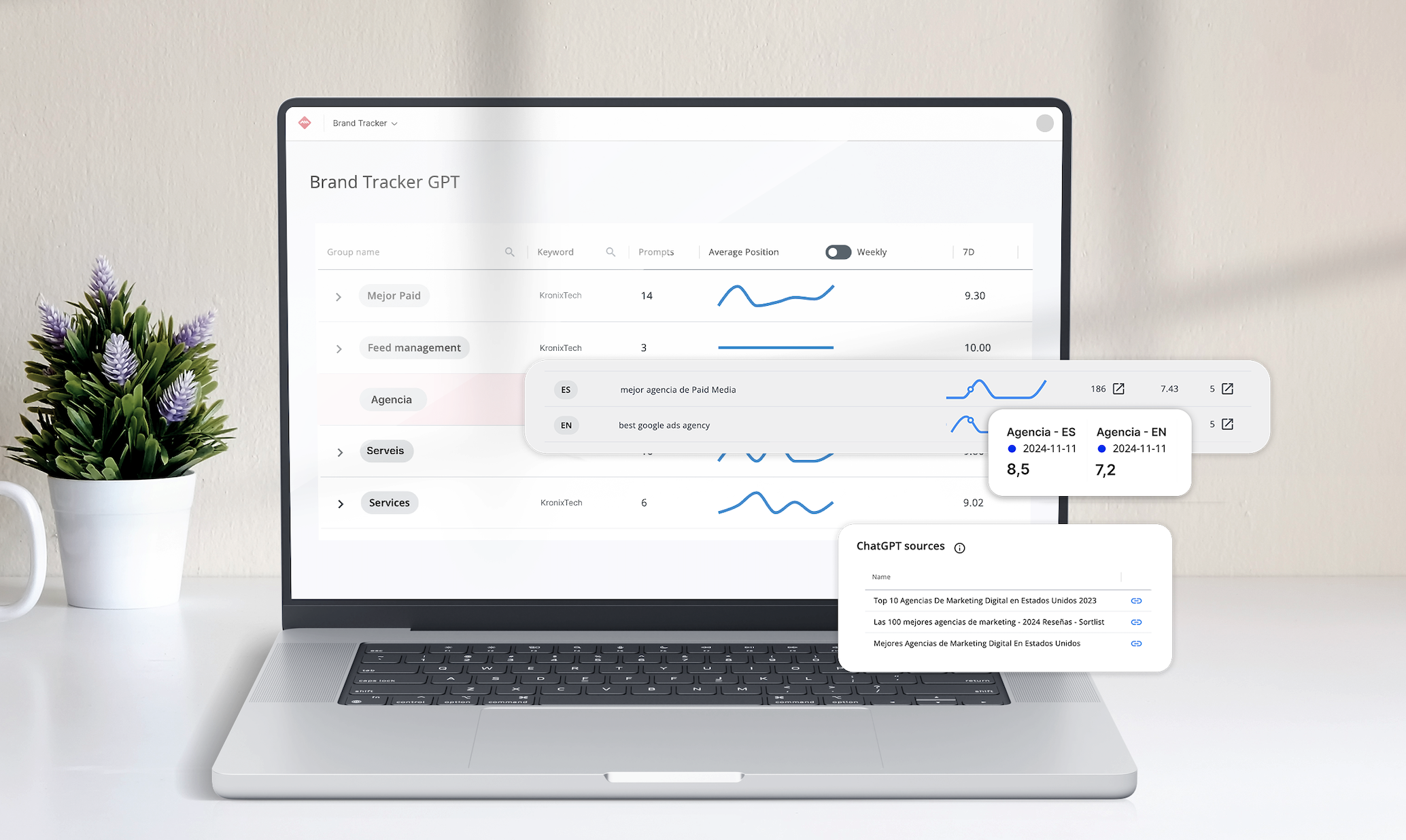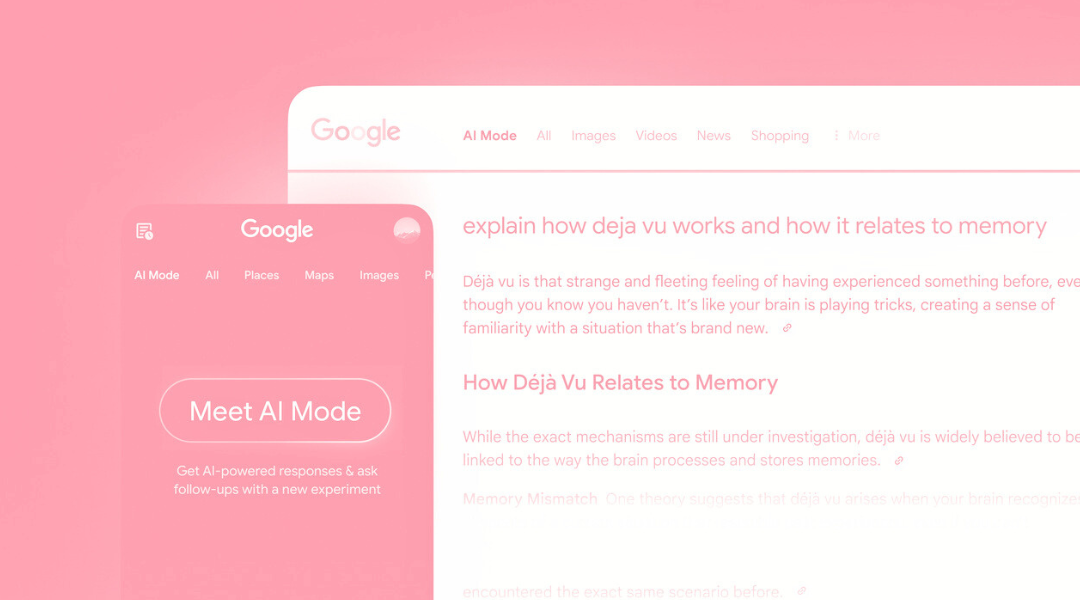10 Key digital marketing trends for 2025
2025 promises to be a year of profound transformation in the digital marketing landscape, driven by technological advances, changes in consumer...
Plan, activate and control media to hit targets with precision.
Turn data into smart decisions with advanced analytics and modeling.
Efficiency, governance and scale for agencies and teams.
![[Ebook] SEO + AI: eBook to Master AI Overviews and GEO](https://www.adsmurai.com/hubfs/MKT%20-%202025/WEB/Resources%20-%20Banners/HeaderEN_Ebook_SEO+AI.png)
[Ebook] SEO + AI: eBook to Master AI Overviews and GEO
Learn how to structure and distribute your content so generative models can understand it, trust it, and reuse it in their answers. A practical guide to compete and appear in AI Overviews and AI-powered assistants.
Discover more
A new paradigm is emerging: Generative Engine Optimization (GEO). This innovative approach leverages the power of generative AI to revolutionize how we optimize content for search engines. As AI-powered search engines like Google and Bing become increasingly sophisticated, understanding and adapting to this new era is crucial for businesses seeking online success.
GEO goes beyond traditional SEO by focusing on creating content that is not only easily understood by search engine crawlers but also by advanced AI language models. By understanding the intricacies of how AI processes information, businesses can optimize their content to rank higher in search engine results and attract more organic traffic.
In this comprehensive guide, we will delve into the fundamental principles of GEO, explore its key benefits, and provide actionable strategies to implement this cutting-edge approach. From understanding the basics of generative AI to mastering advanced techniques, we will cover everything you need to know to succeed in the age of GEO.
TABLE OF CONTENTS
GEO (Generative Engine Optimization) is the natural evolution of SEO in a landscape dominated by artificial intelligence. Its goal is not only for your website to appear in traditional Google results, but for your content to be understood, cited, and directly used by generative AI models such as ChatGPT, Gemini, or Perplexity.
Unlike traditional SEO, which focuses on keywords, links, and rankings, GEO emphasizes:
Structuring information into clear, easy-to-extract fragments.
Optimizing machine readability: hierarchical headings, lists, tables, and concrete data.
Building external authority, ensuring your brand becomes a reference source rather than just a content publisher.
Adapting to multiple AI engines, recognizing that each one (Google Gemini, OpenAI, Perplexity, etc.) interprets information differently.
In short: GEO ensures that when a user asks an AI a question, the answer is fueled by your content.
![]()
While traditional SEO primarily focuses on optimizing content for search engine crawlers, GEO takes a more holistic approach. It considers the nuances of how AI models process information and how they interpret search queries.
Here are the key differences:
By understanding these distinctions, you can effectively optimize your content to rank higher in search engine results and attract more organic traffic.
Here’s what we’re seeing lately (and what we’re already testing with Adsmurai clients):
|
Update |
What it means / Impact |
What we’re already doing (and what you could do too) |
| Google has completed its June 2025 Core Update | Changes in how Google interprets content, with greater emphasis on relevance and quality. Many websites experienced strong traffic fluctuations. | Review the most affected content, strengthen quality signals, and revisit E-E-A-T (experience, expertise, authority, trust). |
| Rise of AI Overviews / AI Mode in searches | Instead of classic results with links, Google (and others) now display synthesized answers generated by AI that “extract” snippets from multiple sources. | Structure content so it can be “extractable” (clear fragments, proper heading hierarchy, precise data). At Adsmurai, we’re experimenting with this type of content to get positioned in AI summaries. |
| Higher preference for external sources / earned media | Generative AIs favor content that is cited or referenced from authoritative external sources, rather than content purely self-published without external backing. | Collaborate with relevant media, generate mentions, and get other websites to use your content as a cited source. |
| Structured and machine-readable content | Content needs to be divided into sections, with data, tables, bullets, semantic markup, and clear “chunks” so AI can understand it better. | At Adsmurai, we already apply content “chunking” and semantic markup to make AI extraction easier in some projects. |
| Language-, engine- and domain-specific optimization | What works on ChatGPT may not work the same way on Gemini or Perplexity. Tailored strategies for each AI engine are increasingly necessary. | We run specific visibility audits across different AI engines for each client (in practice, not a “one size fits all”). |
While traditional SEO has been a cornerstone of digital marketing for years, it has its limitations. It often relies on keyword stuffing, backlink building, and meta tag optimization, which can be time-consuming and ineffective in the face of evolving search algorithms. Moreover, traditional SEO may not adequately address the nuances of user intent and the growing complexity of search queries.
The rapid advancement of AI has revolutionized the way we search online. AI-powered search engines like Google Search and Bing are increasingly relying on advanced algorithms to understand the context and intent behind search queries. This shift necessitates a new approach to content optimization that aligns with AI-driven search.
GEO offers several advantages for businesses:
By embracing GEO, businesses can stay ahead of the curve and capitalize on the power of AI to drive growth and success.
To ensure your digital presence remains visible in this new “GEO + SEO + AI era”, here are some recommendations we’re already applying successfully:
Extractable content
Make sure AI can easily cut out sections of your text to generate quick answers. Well-structured headings, concise paragraphs, lists, tables…
(Example: sections like “What is it” or “Advantages” — easy for AI to select and reuse).
Authority vs. self-promotion
Get other websites to cite you, have your content referenced, and collaborate with reputable media or authors. The more external citations, the better your visibility in AI engines.
Multi-system optimization
Don’t just optimize for Google: analyze how your content performs in Gemini, Perplexity, ChatGPT, etc. Each engine has different biases and ways of interpreting information.
New measurement and constant monitoring
Traditional metrics may lose relevance. At Adsmurai, we also measure things like “AI citation probability” and visibility in generative summaries.
Don’t neglect classic SEO
GEO is complementary, not a replacement (at least for now). If you lose traditional SEO rankings, your baseline traffic can drop significantly.
Generative AI, the technology behind GEO, is a type of artificial intelligence that can create new content, such as text, images, or music.
Here's a simplified explanation of how it works:
Think of it like a sophisticated autocomplete feature. The more data a model is trained on, the better it becomes at generating human-quality text.
To optimize content for generative AI, or GEO, you need to consider several key factors:
The process of optimizing content for Generative AI:
By understanding these factors and implementing effective strategies, you can optimize your content for generative AI and improve your search engine rankings.
Optimizing your content for generative AI requires a strategic approach that balances quality, technical finesse, and relevance. Generative experience optimization (GEO) focuses on enhancing how content is interpreted by AI models, aligning it with search intent, and making it more accessible to both users and search engines.

By implementing these strategies, you can optimize your content for generative AI and improve your search engine rankings. Remember to stay updated on the latest trends and best practices in GEO to stay ahead of the competition.
As we stand on the brink of a new era in digital marketing, Generative Engine Optimization (GEO) emerges as a powerful tool to elevate online visibility and drive business growth. By understanding the principles of AI-powered search and implementing effective GEO strategies, businesses can unlock the full potential of the digital landscape. By prioritizing high-quality content, optimizing for semantic search, and leveraging AI-driven tools, you can create a competitive edge and thrive in the age of generative AI. Embrace the future of SEO and unlock the power of GEO.

2025 promises to be a year of profound transformation in the digital marketing landscape, driven by technological advances, changes in consumer...

Until now, we searched.Now, Google thinks for us. The so-called Modo IA or AI Mode has just landed in Spanish. Yes, it’s official: Google has...
.png)
For years, eCommerce has been in a constant process of optimization: faster stores, more segmented ads, more precise funnels, and automations that...